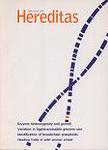版权所有:内蒙古大学图书馆 技术提供:维普资讯• 智图
内蒙古自治区呼和浩特市赛罕区大学西街235号 邮编: 010021

作者机构:Jiaxing Second Hosp Dept Pediat Jiaxing 314000 Peoples R China
出 版 物:《HEREDITAS》 (Hereditas)
年 卷 期:2025年第162卷第1期
页 面:1-10页
核心收录:
基 金:Decode
主 题:Allergic asthma Obesity-related asthma Plasma proteins Mendelian randomization analysis
摘 要:BackgroundWith the development of the economy, the number of obese patients has been increasing annually worldwide. The proportion of asthma patients associated with obesity is also gradually rising. However, the pathogenesis of obesity-related asthma remains incompletely understood, and conventional pharmacological treatments generally show limited *** study aims to explore the causal relationship between obesity and allergic asthma, elucidate the pathogenesis of obesity-related asthma, and identify the plasma proteins involved in its development, providing new insights for clinical *** this study, we employed a two-step approach for mediation Mendelian randomization (MR) analysis, utilizing stringent selection criteria to identify instrumental variables (IVs). This approach was used to assess the causal impact of obesity on allergic asthma and to validate the plasma proteins identified as mediating factors. We further explored the functions and enriched pathways of the mediating proteins using Gene Ontology (GO) and Kyoto Encyclopedia of Genes and Genomes (KEGG) analyses. Finally, we conducted drug-targeted MR analysis to evaluate the potential of each mediator plasma proteins as a drug target gene. If significant heterogeneity remained among the IVs, we applied the weighted median method as the primary analytical tool. Otherwise, we utilized the inverse variance weighted (IVW) method as the main analytical approach. Additionally, we conducted various sensitivity analyses and statistical tests to further illustrate the robustness of the observed *** research findings indicate a causal relationship between obesity and allergic asthma. Plasma proteins such as TPST1, ROR1, and DAPK1 mediate this relationship, with TPST1 accounting for over 10% of the mediation effect. GO and KEGG analyses show that the genes corresponding to these mediator proteins are primarily enriched in pathways related to responses to st